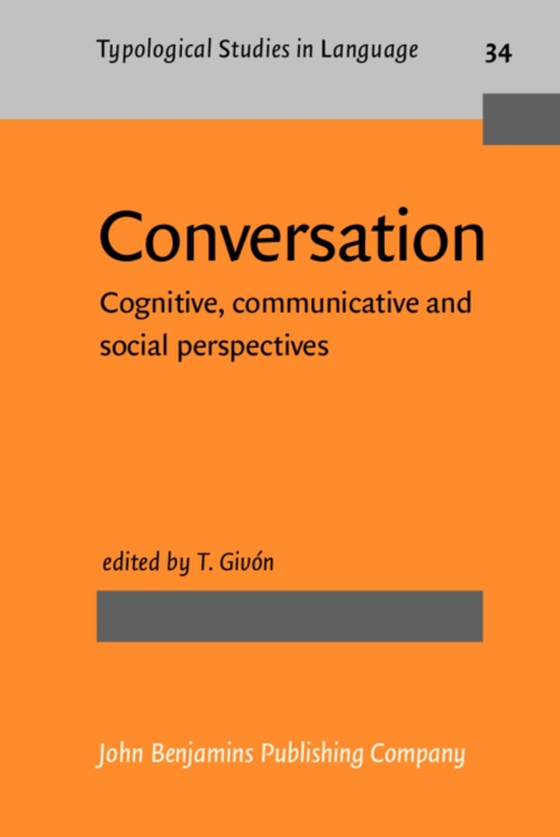
Conversation e-bog
1021,49 DKK
(inkl. moms 1276,86 DKK)
The papers in this volume were originally presented at the Symposium on Conversation, held at the University of New Mexico in July 1995. The symposium brought together scholars who work on face-to-face communication from a variety of perspectives: social, cultural, cognitive and communicative. Our aim for both the symposium and this volume has been to challenge some of the prevailing dichotomie...
E-bog
1021,49 DKK
Udgivet
7 maj 1997
Længde
310 sider
Genrer
Linguistics
Sprog
English
Format
pdf
Beskyttelse
LCP
ISBN
9789027275790
The papers in this volume were originally presented at the Symposium on Conversation, held at the University of New Mexico in July 1995. The symposium brought together scholars who work on face-to-face communication from a variety of perspectives: social, cultural, cognitive and communicative. Our aim for both the symposium and this volume has been to challenge some of the prevailing dichotomies in discourse studies: First, the cleavage between the study of information flow and the study of social interaction. Second, the theoretical division between speech-situation models and cognitive models. Third, the methodological split between the study of spontaneous conversation in natural context and the study of speech production and comprehension under controlled experimental conditions. And fourth, the rigid genre distinction between narrative and conversational discourse.All four dichotomies have been useful either methodologically or historically. But important as they may have been in the past, the time has perhaps come to work toward an integrated approach to the study of human communication, one that will be less dependent on narrow reductions.Both the ontological primacy and the methodological challenge of natural face-to-face communication are self evident. Human language has evolved, is acquired, and is practiced most commonly in the context of face-to-face communication. Most past theory-building in either linguistics or psychology has not benefited from the study of face-to-face communication, a fact that is regrettable and demands rectification. We hope that this volume tilts in the right direction.
 Dansk
Dansk

